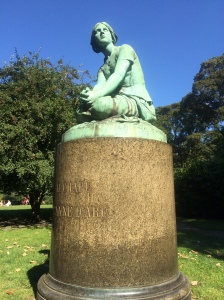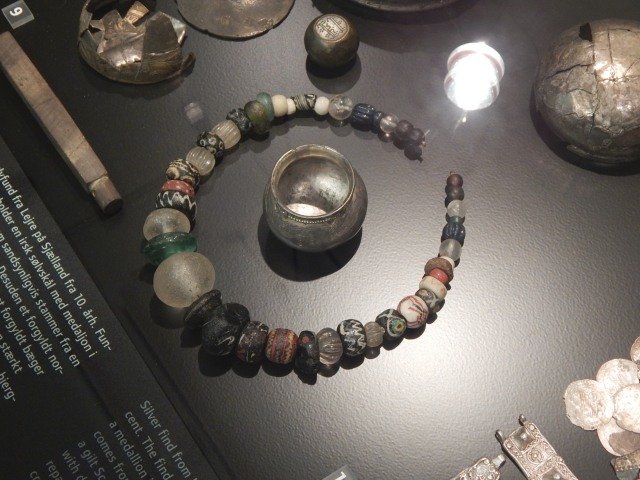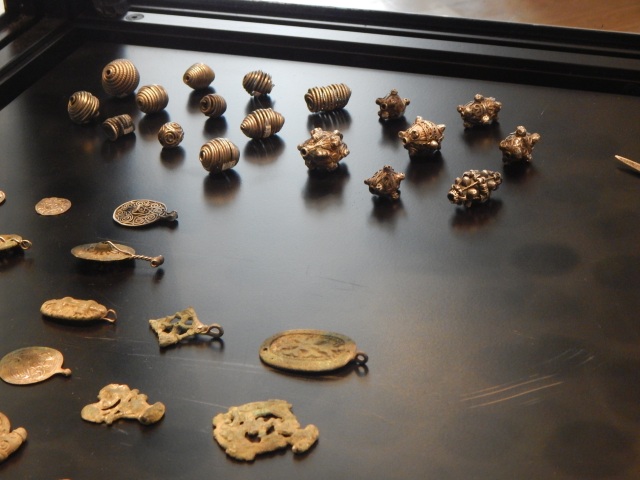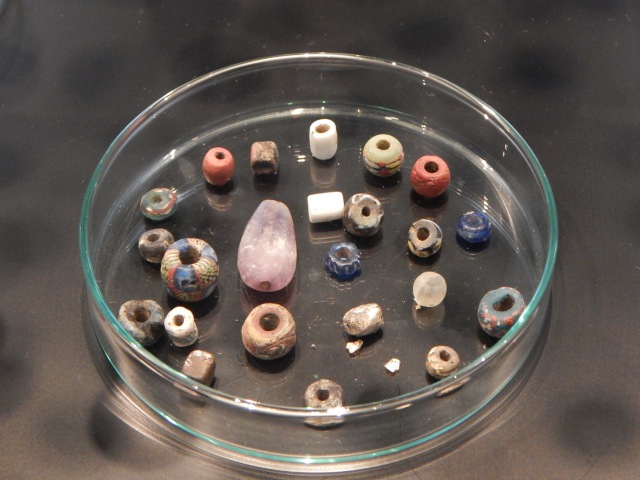
It’s been a busy first week in Copenhagen! Much of my time has been dedicated to sorting out my guest researcher residence permit, which will allow me to stay in the EU longer than the 90-day limit usually imposed on US citizens. Fortunately, the Copenhagen Citizen Service Center is separated from the nearest Metro station by Ørstedsparken, so every day that I’ve had to deal with the government has begun pleasantly with a walk through the park.
I’ve nevertheless set aside some time to begin research, which began with an afternoon at the Nationalmuseet. The Viking collection is always in high demand, with some items on loan to different museums and other items pulled from display for researchers to examine. I was happy to find my favorite item still there—a necklace that had been buried around the year 900 with a hoard near the royal estate of Lejre, some 25 miles (40 km) from the modern center of Copenhagen. The beads and glass of this necklace traveled to Denmark along trade routes reaching through Russia to their sources in distant Iran, India, and Syria. Among other objects, the necklace was buried with a silver bowl from an Irish monastery and a large weight inscribed in an imitation (!) of Arabic script.

This necklace represents the florescence of trade routes established generations earlier at the dawn of the Viking Age. By tracing how these kinds of beads first started to appear in Scandinavia, I hope not only to better understand how these trade routes developed but also how they were connected to the spread of viking violence, which seems to have flourished at the very same time.
But aside from these old favorites, I was happy to see that the rotating displays included some exciting new hoard finds. These temporary displays give museum curators an opportunity to show off some of their much larger collections held in storage, as well as some items that have been freshly discovered. In particular, selections from a hoard from Lille Karleby caught my eye. This hoard was buried about seven miles north of the Lejre hoard, but presumably somewhat earlier. It was uncovered less than a year ago in August 2015.


The purple bead of amethyst is perhaps most striking to me. It is, like rock crystal, a variant of quartz, and like the rock crystal beads of the Lejre hoard, it too would have been imported ultimately from Iran or India. But whereas the clear beads of rock crystal enjoyed recurring popularity throughout the Viking Age (ca. 800-1050), amethyst beads had their brief heyday back during the late 600s. These eastern beads would actually have been imported via Western Europe, based on the observation that they showed up in Sweden later than elsewhere in the north. So this bead would have been an old heirloom when it was buried alongside the work of contemporary beadmakers, such as the mosaic bead to its left.
The earliest Scandinavian beadmakers around 700 learned how to cobble these beads together from little squares of glass—often using a mixture of green checkerboards and blue tiles, like those found in this bead. This is an example of master craftsmanship depending on raw materials imported directly from the east, and it contrasts strongly with the earlier dependence on finished goods imported via the west, exemplified by the heirloom amethyst bead. So not only does this hoard capture in a snapshot one of the most important transformations of Viking-Age Scandinavia, but it also acts as a reminder that Viking-Age Scandinavians were complex individuals who could have similarly complex relationships with the beads that they carried and buried.
